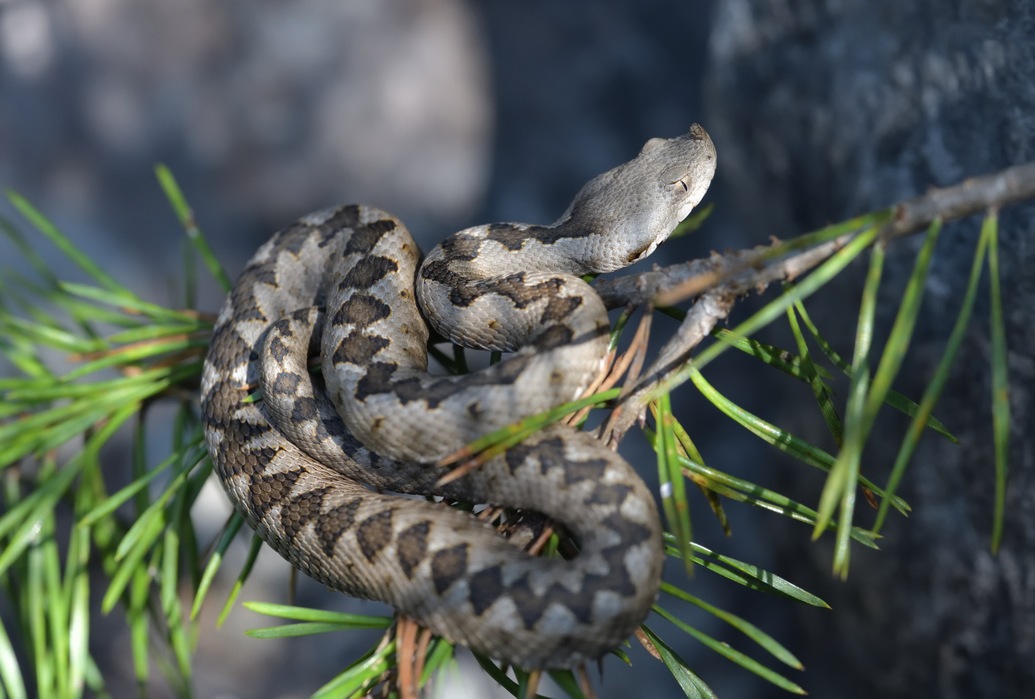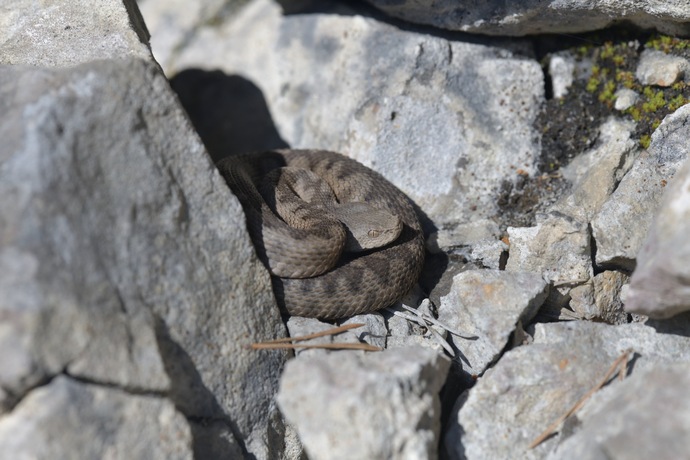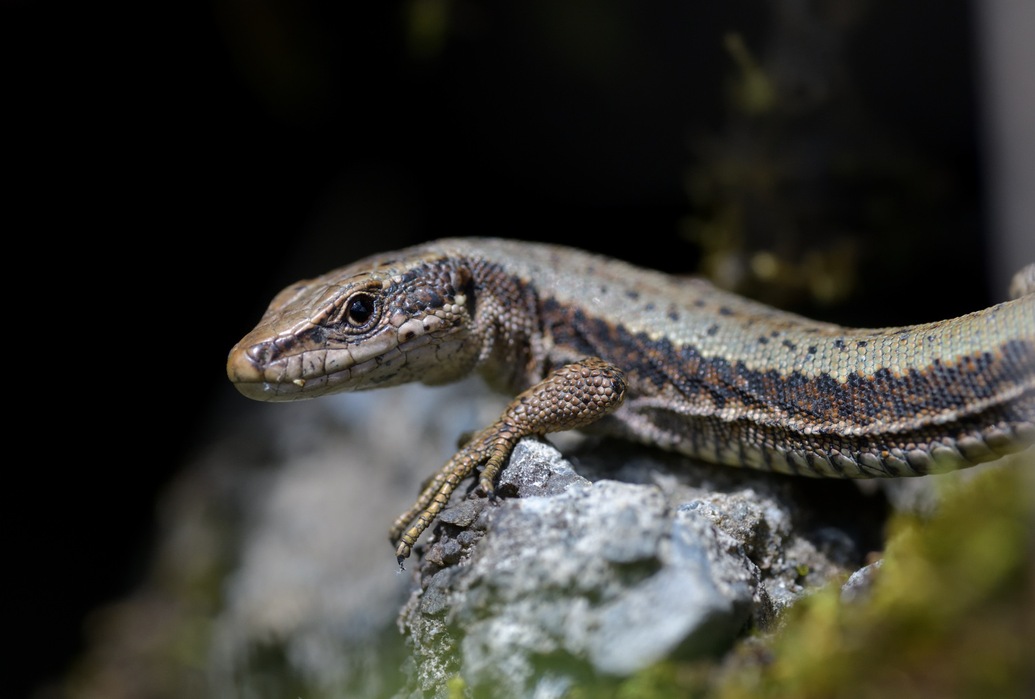Back from polar lights (still: yeeeeha!) to herpetology: a trip report from 2 days in Carinthia/Austria and one in Slovenia. In advance I can happily note: all pics – except for one obvious – are made in-situ! 🥳
Meanwhile on the border to tradition, Günther (who is of course again writing a book, the grasshoppers of Carinthia, to be published), Christoph and I visited Carinthia, including one day in Slovenia. Planned was to visit Slovenia only, to search on the mystic three-viper-mountain (mainly because of Vipera aspis), but then the weather conditions were not well enough, so we stayed in Carinthia and made only a daytrip over the border. Originally also a fourth colleague wanted to join, but then decided to go birding in the Seewinkel region instead (shame!).
To say it up front: We didn’t see a single viper in Slovenia. Ouch. On the way there we were sure to easily find at least two out of the three species (Vipera aspis/Apsisviper/asp viper, Vipera ammodytes/Hornotter/horned viper, Vipera berus/Kreuzotter/common European viper), even more so the exact locations exist online, but well, nope. Whatever the reason might have been. The weather honestly was not good (mostly cloudy and coldish), but maybe we were also lousy searchers. So, lots of driving, hiking und dozens (!) of ticks for seeing some very common lizard species (common wall lizard/Mauereidechse/Podarcis muralis, green lizard/Smaragdeidechse/Lacerta “viridis” [should be “adreatic lineage”], slow worm/Blindschleiche/Anguis fragilis), that we could have also spotted 5 minutes away from our accommodation in Carinthia. To save our honour: Later we found out that also other people were there without success concerning vipers, or without seeing Vipera aspis.
So that was Slovenia, on the first day.
Coming back to our accommodation in Arnoldstein (the Wallnerwirt, highly recommendable for its food, amazing Kärntner (Kas-)Nudeln [some yummy local type of filled dumplings] and breakfast) there waited a big surprise: While shortly interrupting our whining around why we didn’t find anything, suddenly the field trip leader of the Styrian ÖGH group entered the bathroom, and happily noticed: Yeah, 19 people of ours are sitting upstairs around the corner and we are on a field trip in Carinthia.😄So the evening program for the next days was clear, sitting together with beer and discussing herps and why (not) finding them. One big part of this chitchat, by the way, is to exactly tell where and how you found some stuff. “So yeah, in country XY, when you drive that little gravel path from village Furtheraway to Nooneknows, behind the 3rd bush after the second crossing, on the left side, 3 meters before the border to country XZ, between the brown houses (made of wood!), THERE is lots of lizards/snakes YZ”. But every now and then these stories develop a minor problem: They often took place years in the past, so in reality it looks completely different nowadays und you will find everything overgrown or a big hotel complex.
 |
 |
| Right next to the accommodation is a population of introduced Podarcis muralis, with an incredible density of individuals. | |
And of course, you also discuss what you found during your current field trip, and from our 19 Styrian colleagues we heard, that they already found some vipers (V. ammodytes) here, some 15 minutes away! So, the bar was set high for us, and we couldn’t wait to search for V. ammodytes the next day in the Schütt region. And we already knew we had to do the one thing: Suachn suachn suachn! (dialect for: search search search!).
And boy, did we! On the next day we found in a quite short amount of time two juvenile and one adult male V. ammodytes, as well as a juvenile Zamenis longissimus/Äskulapnatter/Aesculapian snake, which are usually not that easy to find. And of course several lizards were out too.
Also, our plan to first have a short look for V. ammodytes and then drive to further away locations with Iberolacerta horvathi/Kroatische Gebirgseidechse/Horvath’s rock lizard has worked out well. Of the latter we found about 70 specimens.
|
And here a short video of Iberolacerta horvathi, I promise to make it less shaky and zoomy the next time 😬 |
But the real highlight there was having both Zootoca species (Z. vivipara/Bergeidechse/viviparous lizard and Z. carniolica/Kärntner Bergeidechse/Carniolan lizard) on one mountain and finding both. Z. carniolica in the lower altitudes, syntop with I. horvathi (even sitting on the same stone and interacting) and Z. vivipara on the higher altitudes. And thanks to this publication (Rodriguez-Prieto, A. et al., 2017) we were even able to distinguish them in the field. 😀Somehow it's very exciting, after counting scales and femoral pores, to know which species you were actually seeing!
Later that day I also earned a free beer for finding the car keys Christoph lost somewhere in the middle of a big meadow, potentially leaving us locked out at 1.500 m.a.s.l., with very dark clouds approaching. Actually, the way how they were found was fun – by the pictures he took we reconstructed his path on the meadow which finally led to finding the keys. So, V. ammodytes: check, I. horvathi: check, both Zootoca species: check aaaand free beer: check!
On the last day we just had a short look for V. ammodytes in the Schütt region because we didn’t want to go back to Vienna too late, on a well-known spot, which just unfortunately has pretty difficult terrain. After staggering over the stones for quite some time and already close to giving up, Günther found a juvenile V. ammodytes basking some dozen centimetres above the ground on a branch of a pine tree, in the shades.
 |
 |
| Left: The obligatory Podarcis muralis and right Günther clicking V. ammodytes. |
|
 Vipera ammodytes, exactly as found. Vipera ammodytes, exactly as found. |
|
And here a short video of Vipera ammodytes basking in the habitat, also here I promise to make it less shaky and zoomy the next time 😬 |
So, day saved, and we could leave Carinthia with the feeling of actually having made many nice observations. Ah, and concerning shade, half of the V. ammodytes specimens we found were in shade or half-shade, even though it was not that warm and in the middle of May.
On the way back we then had the obligatory stop at the Hirter brewery, having beer and Kärntner Kasnudeln, devouring them for a third time within four days 😋.
To sum it up, a really nice and relaxing field trip, but still with a score to settle (because it was the reason we actually went on field trip): Vipera aspis.
Oh and not to forget: The obligatory music tip! This time: Käptn Peng & die Tentakel von Delphi with "Sockosophie".





















